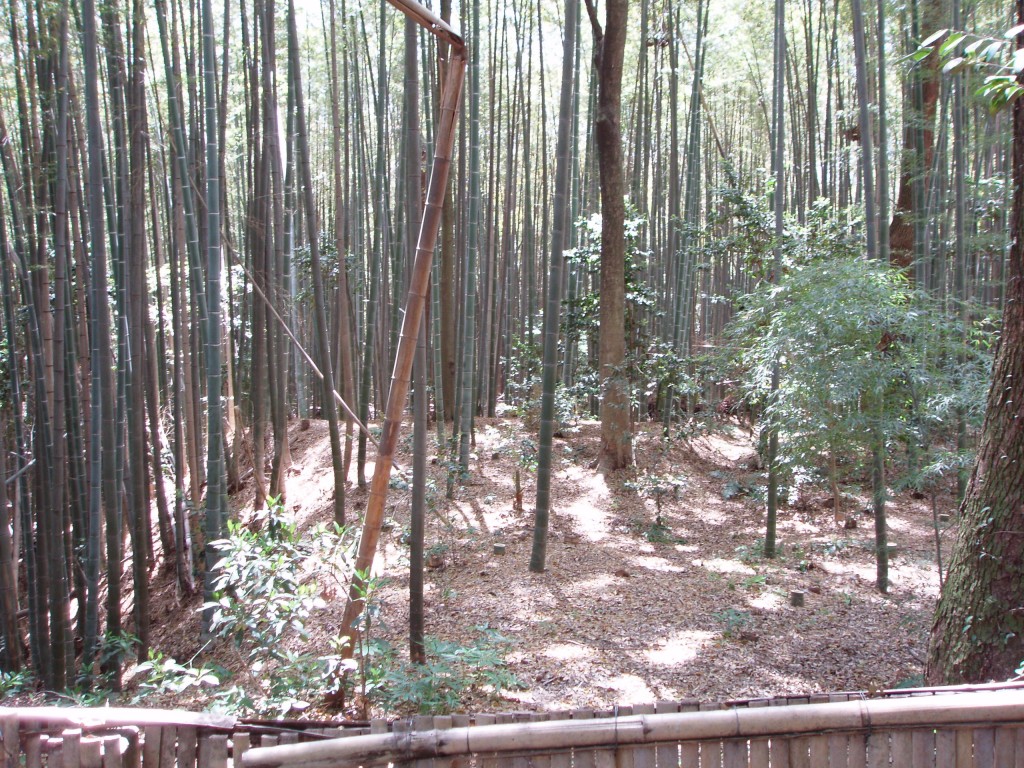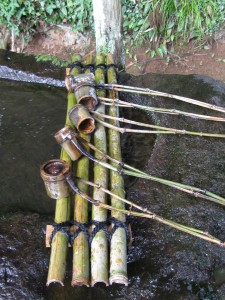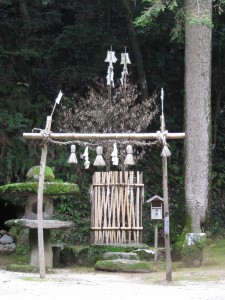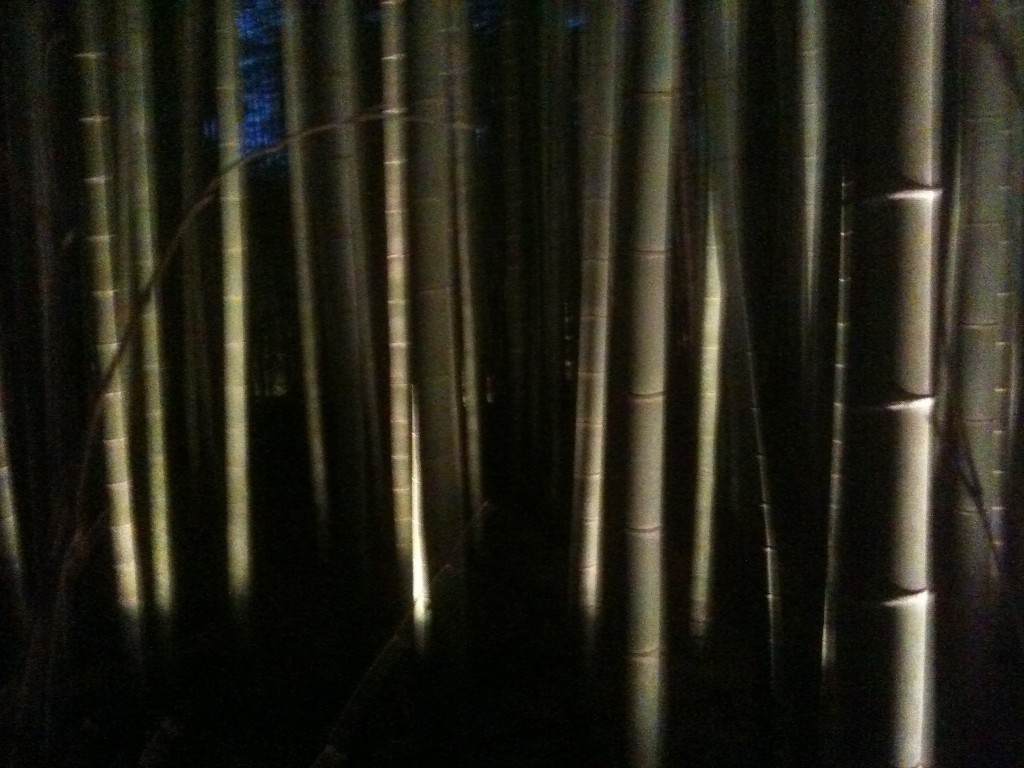
Bamboo grove at Iwashimizu Hachiman
The interesting Heritage of Japan site has a new article about the bamboo links of Japan and the rest of Asia. Bamboo is prominent in Shinto trappings and an important part of traditional culture, and as in other areas it turns out that ancient Chinese beliefs were crucial in shaping the worldview. (The below is an edited extract: for the full article, see here.)
************************************************
Bamboo groves are commonly found near Shinto shrines, and sometimes are grown as part of a sacred barrier against evil. They are commonly to be found near many Buddhist temples. The traditional Japanese bamboo fountain, the Tsukubai, is said to embody and illustrate purity and sacredness and the seed of the bamboo tree is said to be tied to the mythical phoenix often depicted in Japanese arts, which is said to eat only bamboo seeds (Source: Spiritual Significance of the Japanese Bamboo Tree).

Bamboo water basin
Japanese folktales frequently feature woodcutters or childless folk finding a child with magical, superhuman or maverick qualities from a bamboo grove. The “Tale of the Bamboo Cutter” (Taketori Monogatari) tells of a princess from the Moon emerging from a shining bamboo section. See excerpt from Wikipedia entry below:
The Tale of the Bamboo Cutter, also known as Princess Kaguya, is a 10th century Japanese folktale. It is considered the oldest extant Japanese narrative and an early example of proto-science fiction. Specifically, it is among the first texts of any culture to imagine that the Moon is an inhabited world and describe travel between it and the Earth.
It primarily details the life of a mysterious girl called Kaguya-hime, who was discovered as a baby inside the stalk of a glowing bamboo plant. She is said to be from Tsuki-no-Miyako (“The Capital of the Moon”) and has unusual hair that shines with a light like the moon.
‘The Tale of the Bamboo Cutter’ is said to have an equivalent version in Tibetan folklore, however there remain questions about whether the Japanese 9th century tale emanated from Tibetan sources, or whether the tale was brought to Tibet via Japanese military incursions in the 1920s.

Bamboo is used in a variety of ways, as in this structure at Kumaso Jinja near Izumo
And yet, due to much recent DNA research showing that Tibetans and Japanese share ancient ancestral genes, it is possible that the lucky fertility symbol beliefs and bamboo-cutter-birth tales reflect the presence of the earliest ancient and related migratory lineages out of Southeast Asia, likely represented by lineages bearing haplogroups C while taboo beliefs emanated from haplogroup D-bearing tribes (See ‘Origin and dispersal of Y chromosome haplogroup C’ (Zhong et al. 2010) and also ‘The Himalayas as a Directional Barrier to Gene Flow’).
“Haplogroup C, is spread over a large region of Asia and Australia, as well as the North and South American continents. However, it represents the paths of the early human migrations, … mostly prevalent only in people originating from the coastal regions, and the few Native Americans and Australian Aborigines left alive today”.
Haplogroup DE: … The Asian lineages Haplogroups DE and D are found primarily in Tibet and the Andaman Islands, and Haplogroup D is present in India, in some isolated northeastern tribes.” — DNA Haplogroups
It is hereby suggested there are several different sources from which bamboo-related beliefs and ideas were derived, the ideas of bamboo as auspicious and the earliest tales of birth of persons or characters from the bamboo grove were from lineages that are related to the C and D haplogroups (Southeast Asian as well as Andamanese emergence from bamboo; Tibetan bamboo cutter tale); the function of bamboo grove warding off evil.
However, since sacred bamboo groves around Shinto shrines hold a clear function of warding off evil which is similar to Chinese beliefs of bamboo driving off evil spirits, as well as Northeastern Indian-Nepali ideas about bamboo groves as ‘evil traps’, thus corresponding to the distribution pattern of DE/D haplogroups, suggest the superstitions and beliefs concerning bamboo originated from Southwestern China which is also where the natural bamboo forests are distributed.

Bamboo light-up at the Nonomiya Shrine, Kyoto

i love your posts! it gives such an in depth look at a tradition not seen or exposed in the Western world.
thank you.